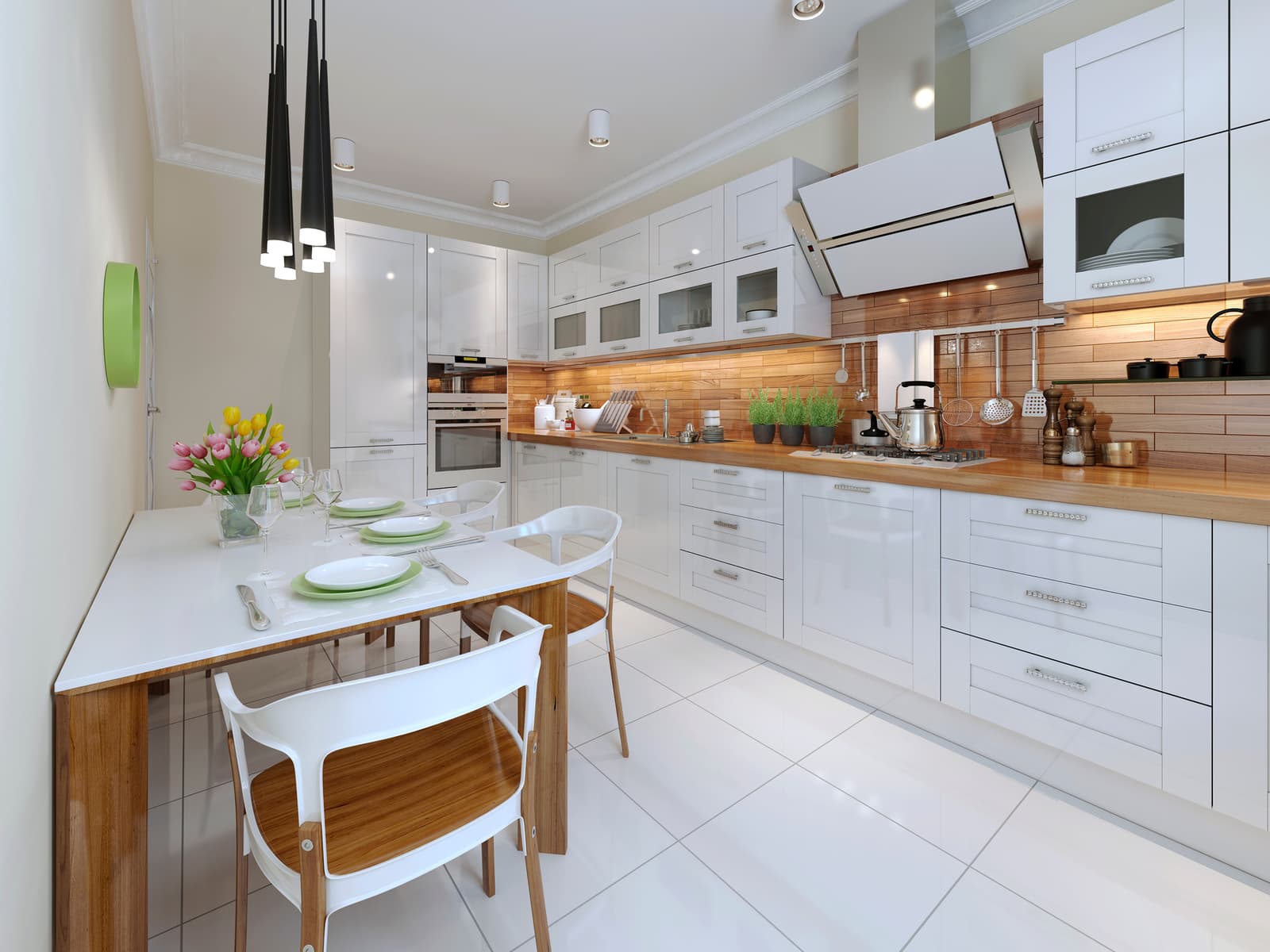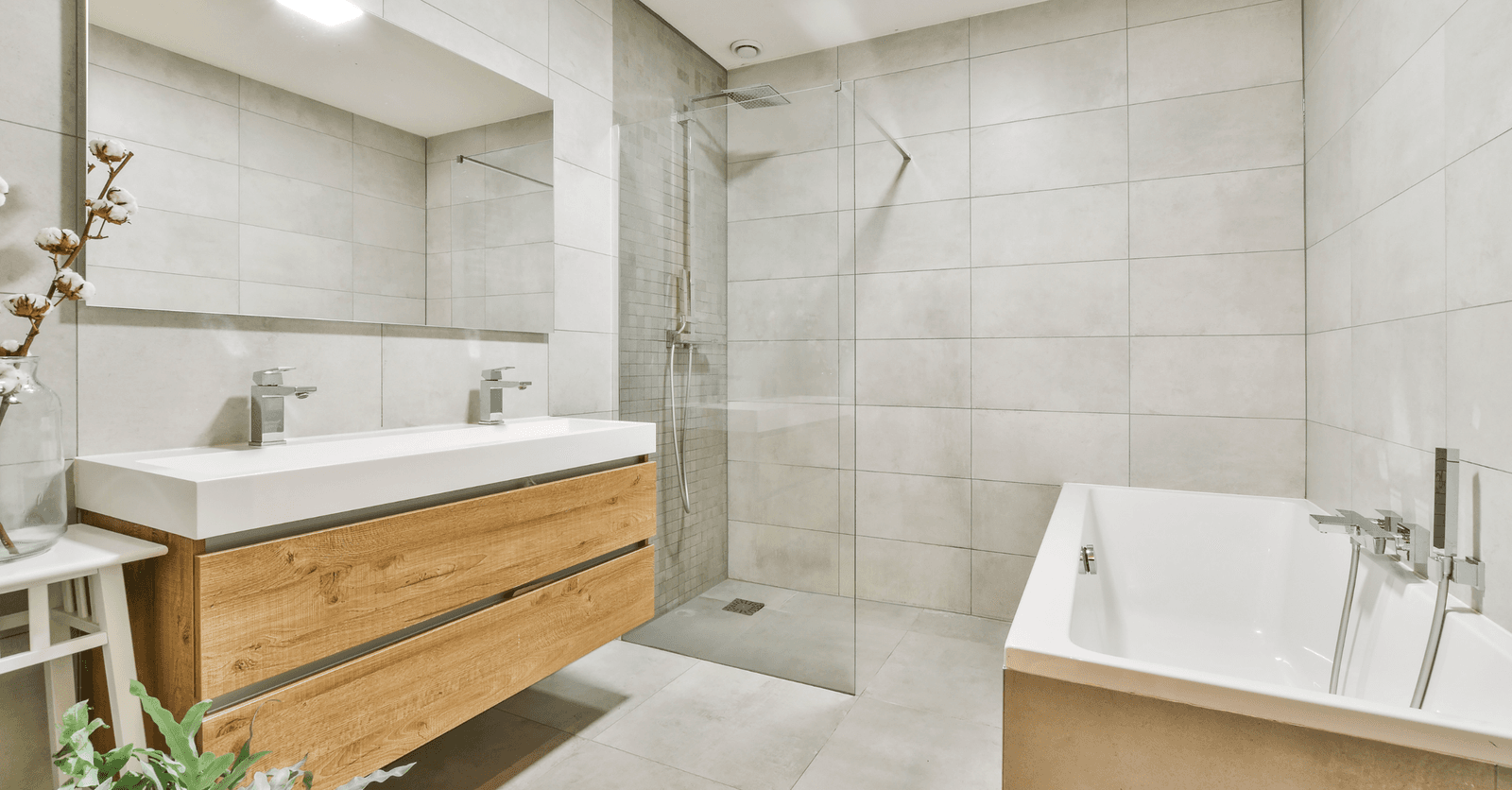How to lay decorative brick and stone on an interior wall
By Christine Simard
Updated on November 7, 2023

There are a few options available to you in order to add a brick wall in your living room for a nice, rustic touch. Among these, you have the choice of moving to an abandoned factory, knocking down a wall to uncover the original stone and/or rebuilding it in bricks or finally, installing decorative textured wall panels in a brick pattern.
Don't want to move, demolish or feel like your wall is made of plastic? Don't lose hope! Today's manufacturers have adapted the modern look to today's lifestyle by producing briquettes that are easy to mount on a wall, giving you the chance to finally have the brick wall of your dreams.
What are decorative brick and stone?
Compared to traditional brick and natural stone, decorative materials are lighter and have an almost flawless aesthetic finish. Produced with current materials as well as precise designs, these decorative products are thinner than authentic products and do not require the use of a mason. Also known as brick "sheets", the briquettes are about 2 cm thick.
Since the desired effect is aesthetics, be sure to take the time to examine the product before making any final decisions. Some manufacturers offer a product with finishing errors. For example, you might have to scrape a small bead on the back of a few pieces to avoid possible noticeable unevenness. Some manufacturers offer an almost authentic product, but parts of which you have to break to finish the edges and corners.

Patterns of decorative bricks and stones for interior walls
Manufacturers offer brick and stone models in several colours and various distinguished types, including mountain stone, quartz and alcove. Manufacturers also sell faux stones - lightweight concrete poured into a mould and chemically worked, with a 30-year warranty.
What are the surfaces to be covered?
You can install decorative bricks or stones on most surfaces, from drywall to plywood to wood. “If you knew how many false brick walls there are in restaurant yards, for example…”, the owner of the manufacturer Design & Co, Pierre D. Martin told La Presse in 2006. If you know how to lay tiles or a kitchen backsplash, for example, sticking briquettes to the wall is not more complicated.
Interior wall to fireplace; all surfaces can be covered with brick or stone to the point of transforming the rooms of your house into small ergonomic caves. With the help of LED lights, you can create a welcoming and personalized atmosphere, which will make the room an ideal place for parties. Their insulating properties will preserve the fresh air during heat waves and their fire-resistant aspect is all the more an asset.

Laying brick and decorative stone on an interior wall
Have you made your choice of product and surface to cover? The laying of brick or stone is done in three stages: the preparation, the laying of the brick and the pulling of joints (or not). Before you start, you need to decide the process of whether you are going to pull the joints (i.e. put mortar between the pieces) or not.
It is best to space the briquettes when laying them, even if you have to install the mortar 24 hours later. If you don’t think about it and the thin-set adhesive is dry, you’ll be off!
The making a decorative stone or brick wall:
Remove sockets and switches;
Clean the wall to be decorated;
Determine the highest point of the floor and draw a line, from which it is necessary to put the first row;
Divide the wall into sections and draw the lines of the covering;
Put on latex gloves;
Make the mortar mixture (adhesive) in a large bucket;
Apply the adhesive one small area at a time (12 inches or 30 cm) using the notched trowel;
Take the briquettes out of their box or cut them at the desired angles, wearing a mask, glasses and shells;
Glue the entire surface of the briquettes to the wall, starting from the bottom up and from the corners if there are any or otherwise from the center;
Check that the bricks are straight with a level at every three rows;
Adjust the alignment by lifting the briquettes with a finishing nail;
Apply a layer of adhesive to one side of the briquette if it does not adhere well;
Cut the bricks at the desired angles wearing a mask, glasses and shells;
Sand the edges of the briquettes or notch the corners of the cut briquettes according to the desired finish;
Remove excess adhesive with a wire brush;
Wait 24 hours for drying;
Mix the mortar in the desired colour until it is of a non-liquid consistency;
Apply the mortar in the joints with more or less pressure to obtain a flowing, solid or hollow appearance;
Gently clean the stained brick with a sponge soaked in water or wait for the mortar to harden before brushing off the excess;
Apply the finish with a rag or brush to even out the colour and spray the liquid sealer all over the drywall.

The necessary tools for laying decorative bricks
To create a decorative interior wall, you may need the following tools: safety equipment (gloves, mask and goggles), table saw, ceramic blade, electric grinder, mitre saw, two trowels (serrated, smooth), level 4 feet or more, hammer, finishing nails, soft brush, rag, sprayer, wood pencil and felt-tip pen.
Some tips...
Spread some adhesive on the cut pieces to make them adhere more easily.
Use the scraps from the cut pieces to start a new row higher up to avoid overlaps.
Peg your pieces by alternating from one box to another to distribute the shapes and colours well, or if you are more confident in your eye than in chance, create your own mosaic on the floor before laying it.
Save your cuttings to finish a row.
Use corner pieces to make the job easier or mouldings to hide imperfections.
Get 3 renovation quotes from masonry contractors
RenoQuotes.com can help you get quotes from qualified masons and renovation contractors for your interior brick wall. If you submit your project to us, we’ll put you in contact with the best masons in our contractor network. Fill in the form (it only takes a few minutes), and you will get quotes from qualified masons and home renovation companies.
Dial 1-844 828-1588 to speak with one of our customer service representatives
Looking for something else?
Related articles
The latest industry news, interviews, technologies, and resources.

Léa Plourde-Archer
•04 Oct 2024
Ceramic is a highly-resistant and versatile material that is known for being both practical and aesthetically pleasing. Adapted to all tastes, it is sold in the form of tiles that are offered in a wide variety of colours, shapes and textures. There is something for every budget, as prices vary, among other things, depending on the quality of the material and shape of the tiles.

Léa Plourde-Archer
•16 Jun 2025
Thinking about laying tiles as a wall covering? Learn more about the different characteristics of this material that’s both durable and customizable, as well as maintenance tips, and the average cost of tiles.

Editorial Team
•07 Nov 2023
If you're looking to give your interior a modern look, concrete and concrete-inspired wall coverings are a great option. This article explains all the ways you can achieve a concrete look for your wall, with or without real concrete!

Editorial Team
•01 Oct 2024
A common misconception is that it is best to plan home renovations in the summer, rather than during other parts of the year. Although certain tasks, such as paving an entrance or inspecting a roof, require conditions that are specific to the warmer season, in many cases, renovating during the winter can prove to be a good option.

Editorial Team
•07 Nov 2023
With city populations growing rapidly, and space becoming dense and limited, many are choosing to live in a townhouse or condo in lieu of more traditional housing choices. There are plenty of benefits to townhouse and condo living, but what are the rules and regulations for those interested in renovating?